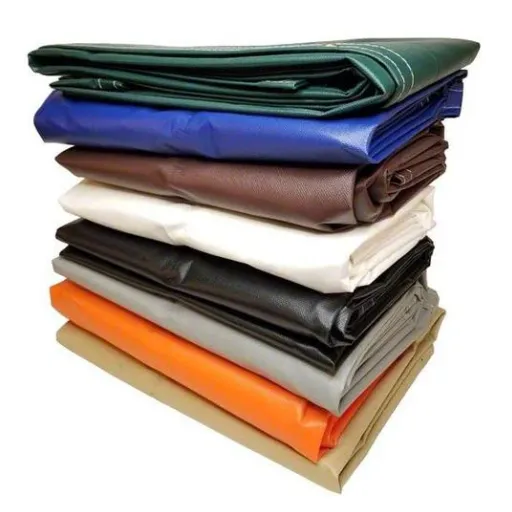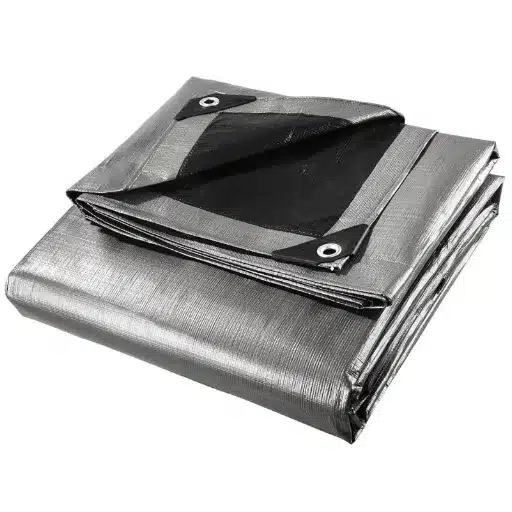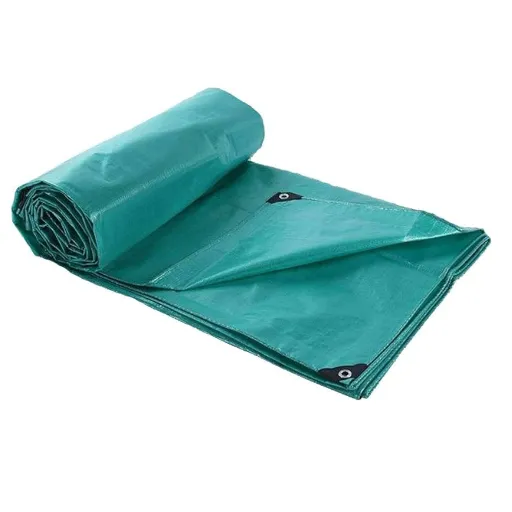Sun shade tarps with grommets are an essential solution for protecting your outdoor areas from harsh sunlight, excessive heat, or damaging UV rays. These products are versatile and durable, they are tailored to give the user customizable coverage while still allowing air circulation and comfort improvement in outdoor areas. The right tarp can open up a whole new world of utility and beauty to your garden plants, for instance, by creating cool places for outdoor seating or even directly covering the plants. This manual will provide you with all the necessary information about selecting the best sun shade tarp: main features, fabric types, and installation hints. Suppose you are a homeowner looking to create a cooler patio area or a farmer needing to protect your crops. In that case, this all-in-one guide will provide you with the necessary information to make a wise and efficient decision.
Understanding Sun Shade Tarps
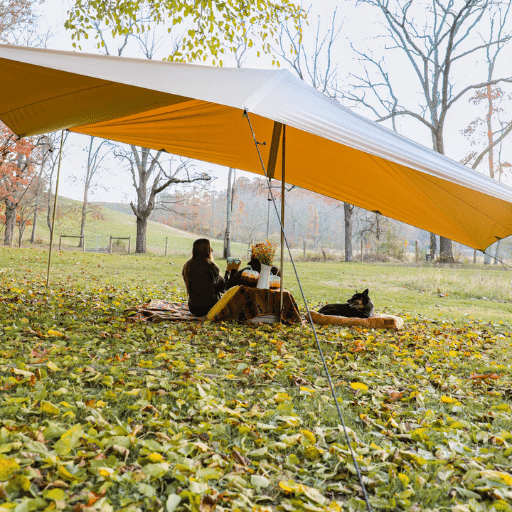
What are Sun Shade Tarps?
Sunshade tarps are a kind of fabric cover specially designed for the outdoors, which protect people and things under the tarp from rays of the sun, along with the high-temperature and UV light that come with it. They are made of polyethylene or high-density polyethylene (HDPE) and are very resilient and weatherproof materials that are moderately permeable to light and allow the air to circulate simultaneously. Based on recent trends and data searches, the sun shade tarps are desirable mainly because of their versatile applications in residential, agricultural, and commercial settings. They are made to lower the temperature of the surrounding area and manage to do so by blocking 90% or more of the harmful UV rays, hence, a cooler and more comfortable atmosphere is created. Sun shade tarps are available in a wide range of options, so they can be made to fit perfectly for different uses of being installed on patios, greenhouses, parking spaces, or children’s play areas. The construction material is lightweight and at the same time strong which makes the process of fixing them very easy but they still last long and are tough enough to resist the effects of nature.
Benefits of Using Shade Tarps
Temperature Reduction
The main purpose of shade tarps is to lower the temperature by a large margin, which they do by simply blocking the radiant energy from the sun. The temperature difference brought about by the use of HDPE tarps, for example, can be around 30% less, which means that the area becomes more pleasant and less power-consuming to cool down, thus becoming more comfortable, especially in hot climatic areas.
UV Protection
Today’s shade tarps are capable of blocking at least 90% or more of the sun’s UV rays that are not only responsible for causing skin cancer and premature aging but also for the deterioration of outdoor materials. This feature of the tarpaulin benefits the health of the population while at the same time protecting the luxury of outdoor furniture and the growth of delicate plant species. Consumer interest in UV protection for outdoor applications is reflected in the increase in sales of these products.
Durability and Weather Resistance
Shade tarps made from tough material resist tearing, mold, and damage from sunlight, wind, and rain significantly. Besides the technological improvements in material science which prolong their life, some brands even claim that their products last as long as 10 years outdoors without any significant wear and tear.
Versatility in Applications
Shade tarps are versatile and their solutions are adaptable to residential, commercial, and agricultural needs. They are used in a variety of industries from the protection of greenhouses to the shading of cars in parking lots. Those items that have been searched mostly are urban farming and solar shading for energy efficiency, to cite just two examples, which shows that usage trends are changing rapidly.
Cost Efficiency
Shade tarps cost less than constant roofing or shading methods, among other things. The reduced initial setup, reusability, and low maintenance requirements are all factors that narrow down the long-term costs making the product appealing to different consumer segments, as indicated by feedback and trends in purchasing.
While easy to work with and powerful, shade tarps are still the most versatile and scientifically validated solution for effective shading in different environments.
How Grommets Enhance Durability
Grommets are essential in reinforcing the durability of shade tarps by strengthening the stakes where the tarps are tied at the most stressed points. These tiny metal rings, which are usually made up of corrosion-resistant materials like brass or stainless steel, guard against ravaging and provide an even distribution of the stress over the fabric. From the latest search results in grommet durability and associated queries, it is clear that there is always a user demand for dependable and durable tarp solutions in both residential and industrial applications. By lessening the wear out of the materials and restricting the strength of the tarp’s structure only to that of the grommets even in the harshest of weather, grommets do wonders by almost doubling the lifespan of the shade tarps. Additionally, proper spacing and fitting also help in their efficiency, thereby ensuring the reliability of performance in different places.
Types of Materials for Sun Shade Tarps
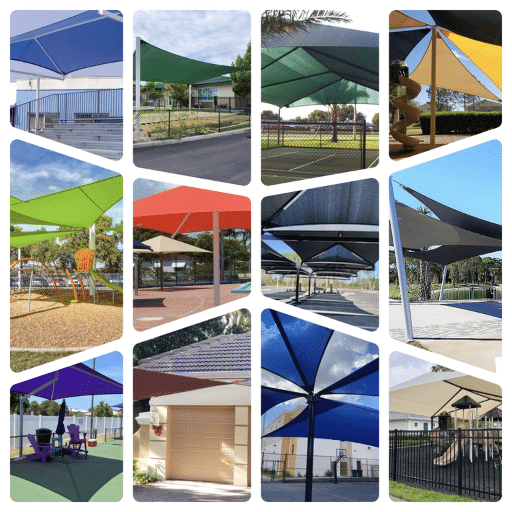
Heavy Duty vs. Lightweight Options
It is essential to grasp the differences and uses when making a choice between heavy-duty and lightweight sun shade tarps. Heavy-duty tarps, which are usually made of high-density polyethylene (HDPE) or vinyl, have excellent resistance to sun, design tear, and severest weather. They are best for industrial applications: covering large machines, building robust shade structures, and even holding up against heavy winds and rain. Sunshade tarps have large denier counts and thick coatings, which are the main reasons why they are long-lasting and reliable.
Lightweight tarps, made mostly of woven polypropylene, on the contrary, are easy to set-up and move around. They might not provide as strong a base as heavy-duty options; however, lightweight tarps are great for residential use – small garden covering, temporary shade, or seasonal use. They are also cheap and manageable, hence a clever and sensible choice for occasional needs.
The data from search trends indicate that not only are people actively hunting for heavy-duty tarps for permanent outdoor installations, but also that the demand for super-lightweights has not diminished, remaining steadily high for their short-term or mobile uses. In the end, the decision is mainly affected by the particular environmental conditions and the desired life span of the usage.
Mesh vs. Non-Mesh Tarps
Mesh tarps on one hand and non-mesh tarps on the other hand serve different purposes depending on their construction and use. As per the most recent data from ‘s search trends, mesh tarps are in high demand in situations asking for controlled breathing, little resistance from the wind and a certain amount of light blocking. Farmers, builders and everyday life often use these tarps to cover outdoor shading units, where on-site air flow is necessary to prevent heat buildup. The non-mesh tarps are the exact opposite; to put it simply, they are mainly used in cases where total coverage and the maximum barrier against water, UV rays, and other natural elements is required. Because of their solid nature, they are preferred for highly-demanding applications that involve exposing vehicles, moving machines, etc. to severe weather conditions. Ultimately, the tipping point in choosing between mesh and non-mesh tarps is in operational requirements—mesh tarps are always at their best in breathable and wind-resistant situations, whereas non-mesh are shielding strongholds for sensitive or long-term needs.
UV Resistance and Its Importance
Ultraviolet (UV) resistance is the characteristic of a material, which makes it capable of enduring the degrading effects of solar ultraviolet radiation. This property is very important for materials that get direct light from the sun often; because it happens over long periods the UV can no longer be a problem and the material gets turned into colors, becoming brittle, and collapsing. There has been and will continue to be a substantial correlating rise in the awareness among the consumers and the industry sectors about the need to protect the assets from the solar hazards as the increase in the number of search phrases regarding UV resistant materials has started to show as the consumer graphs have just hit the top according to the trends of recent searches on the topic from ‘s search engine.
The UV-resistant tarpaulins are made in such a way that they get the UV meson in through the manufacturing process, which helps them to either block or absorb the rays and therefore, they get to last longer and to be more durable. This feature not only increases the life span of the tarpaulins but also maintains the long-term value of the products that are under protection such as machinery, vehicles, or agricultural products. In case of long exposure to outdoor elements, UV breakthrough is not the matter to be compromised; its direct influence is through the protective covers—their lifespan and performance. And this is why the industries from construction to logistics turn to sunscreens heavily as their main trick against sun-induced maintenance costs and loss of assets in sun-intensive areas.
Choosing the Right Size and Custom Options
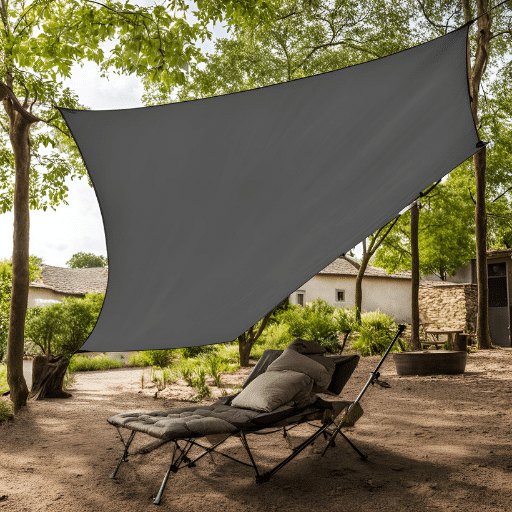
Standard Sizes: 10×10, 10×20, and 20×20 ft
Data from search engines indicates an unmistakable preference for the dimensions of protective covers or tarpaulins such as the standard sizes of 10×10, 10×20, and 20×20 ft in various industries. The most frequently requested size for 10×10 ft is very compact when it comes to personal and light industrial operations. The 10×20 ft size, on the other hand, is still very versatile and is therefore often applied in a variety of ways, such as for vehicle covers, quick shelters, and event setups. Then there is the 20×20 ft size, which is mainly aimed at large-volume commercial activities like covering entire construction sites with tarpaulin and protecting agricultural machinery. Not only that, but search volume statistics also point out that the interest in customization options is on the rise; the buyers are actually concerning more about the ability to customize the materials according to the UV resistance levels, durability needs, and even branding. This clearly shows that the adaptability and precision have become very important qualities in the industry.
Custom Size Tarps for Specific Applications
Following checks of recent search engine statistics, it has been established that the demand for custom-sized tarps cutting across the board in different industries is primarily dictated by the need of companies for precise solutions. Consequently, not only business buyers but also customers in general are increasingly going after tarps that are made to their exact specifications regarding dimensions, materials, and even the performance characteristics. For instance, there are inquiries regarding industrial-grade tarps that sometimes go as far as mentioning the specific UV resistance levels and tensile strength needed for the to be able to withstand such adverse weather conditions, which then are made very clear that the construction and manufacturing projects are the main reason for this high demand. Likewise, agriculture has vacuumed the market of interest in the case of tarps that are breathable yet durable enough to keep the crops and agri-equipment shielded against harsh conditions caused by sunlight or frost. This particular behavior of consumers strongly affirms that the industry is being turned upside down by companies prioritizing function and efficiency over the once-normal mass-produced, all-purpose solutions. Firms supporting their operations with such specifically required tarps will reap quality and quantity of output while at the same time saving on the long-term expenses that would have resulted from the faulty protection.
How to Measure for the Perfect Fit
A perfectly fitting tarp can only be obtained by accurately measuring it systematically, thus the tarp will serve its purpose effectively. First, the area or the object that needs to be covered must be determined and its exact dimensions obtained. Then the length, width, and height (if needed) of the item should be recorded with a tape measure. If the object is of an irregular shape then it is best to measure its widest points so as to be certain that it will be completely covered.
As per the search engine trends data of , among the most common issues that users raise is that of the necessity to leave some extra space for fasteners. For example, if one adds 2 to 4 inches to every measurement he is likely to cover the spots where he will tie down the tarp or where it will be grommeted, which also means that there won’t be any gaps that would allow for the protection to be compromised. Furthermore, the industry guides recommend that all the measurements should be re-checked so as to eliminate inaccuracies that could result in the inefficient placement of the tarp and hence the concomitant waste of no little amount of time and materials. In this way, by fusing accuracy and strategic planning, the consumers will arrive at a tarp that is not only very close to their unique operational requirements but also has a very good fit.
Everyday Use Cases for Sun Shade Tarps
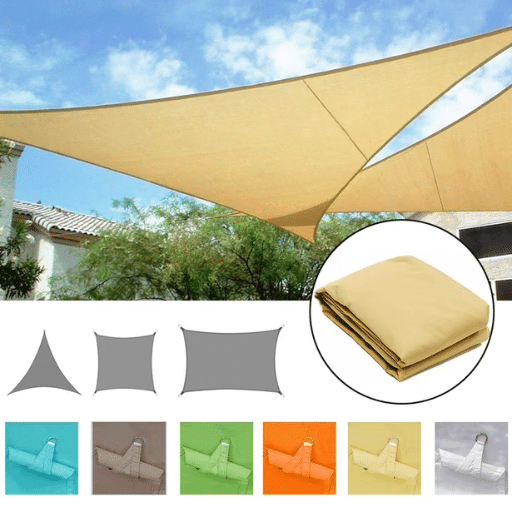
Patios and Outdoor Living Spaces
One of the most versatile solutions for patios and outdoor living spaces is the use of sun shade tarps. A recent search engine data report from showed that “how to shade a patio” is still a popular question among consumers, pointing toward the fact that people are indeed interested in shading solutions that are both practical and cost-effective. Tarps for sun shading are designed to protect against the sun’s harmful rays yet still allow air to circulate, this way they can give rise to a very pleasant and energyefficient outdoor space. These tarps can easily be placed over pergolas, sitting areas, or they can simply stand alone with their own support. Sun shade tarps are addressing heat management and sun exposure issues which are very common among the outdoor living people and they bring functional plus aesthetic benefits thus being in line with the gradually increasing focus on outdoor living as one of the major home improvement trends.
Gardens: Protecting Plants and Creating Shade
It is not only for protecting plants from excessive heat and sunlight that creating shade in gardens is important, but also for promoting healthier growth and maintaining optimal soil conditions. The recent search trends compiled by not only indicated an increase in the number of queries regarding “garden shade solutions” and “plant sun protection”, but also a growing awareness of the shielding need during the hot months and unpredictable climatic conditions caused by global warming.
Planting shade-tolerant trees, garden awnings, and sun shade tarps are some of the common shade solutions that can be employed by gardeners to cut down the amount of sunlight coming directly to their plants while keeping it enough for photosynthesis. Besides, research has indicated that there is a positive correlation between shading and soil temperature moderation as well as water evaporation reduction which ultimately leads to increasing water efficiency for the gardener. The gardener’s application of these solutions not only increases the chance of plant survival during the hot weather but also coincides with earth-friendly practices in gardening which is a trend that is being reflected in both search behavior and sustainable living discussions.
Vehicle Covers: Protection from Sun and Weather
The concern of protecting vehicles from the negative effects of the sun and weather has become a major issue, as shown by the search trends. The monitoring of ‘s data analytics has revealed that the search for “best car covers for sun protection” and “weatherproof vehicle covers” have significantly increased the past year, which indicates that more and more people are becoming aware of the necessity of covering their cars whenever these elements are around.
Creative covers can block UV radiation from the sun which can be harmful, for instance, it can cause deterioration of the paint finish, cracking of the dashboard and fading of the upholstery. At the same time, the weatherproof type protects the car from rain, hail and snow, which can make the car rusty, corroded or physically damaged. There are also some high-tech features in modern covers that are made of multi-layered materials which come with the property of water resistance and at the same time being breathable, this way one can make sure that moisture does not get trapped and consequently lead to mold or mildew.
The growing concern for sustainability among consumers has prompted the manufacturers to develop recyclable and eco-friendly vehicle covers, thus making the latter product version more competitive in terms of price. Choosing a good quality and appropriate vehicle cover is a win-win scenario for car owners in that it reduces their maintenance costs, keeps their cars looking good and functional, and at the same time helps with sustainability goals in the long run.
Practical Tips for Selecting the Best Sun Shade Tarp
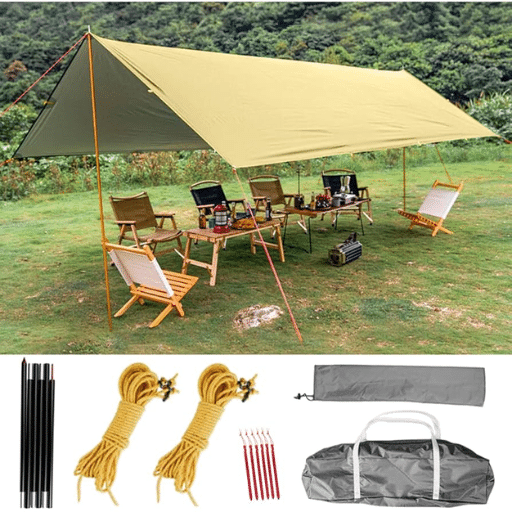
Evaluate Your Unique Swallows and Local Conditions
Finding a sun shade tarp which meets your specific requirements and environmental conditions is important for every activity. The most recent figures from Urban Search Trends show that consumers consider material durability, UV protection ratings, and size compatibility as the most important factors when looking for sun shade solutions. Suppose you reside in a place where sunlight is too intense and temperatures are extremely high. In that case, sun shade tarps made of high-density polyethylene (HDPE) should be chosen because high-density polyethylene (HDPE) has UV blocking effectiveness and heat resistance. On the other hand, if you live in an area with heavy rainfalls, then you need to use waterproof tarps with reinforced edges and grommets so they could be stable and protected.
Besides that, the size of the tarp depends on the purpose of the tarp. It can either be for shading automobiles, outside structures, or fun areas. Moreover, it also shows that there is an increase in the interest of breathable and eco-friendly shades that let air pass through while giving shade, for example, mesh tarps. Taking these things into account can help you to take an educated decision, and at the same time, ensure that the tarp is not only useful but also friendly to the environment.
Consider the Factors that Indicate Quality
Tarp quality evaluation has many factors to consider before one can be sure the tarp will meet the application’s requirements. According to ‘s query history, users mainly focus on the issues of durability, resistance to UV rays, material type, and ease of installation when choosing the tarp. High-end tarps are usually made of strong materials such as polyethylene or PVC which provide long-lasting and resistance to weather factors. Protection from UV rays is inherent in the quality feature as it is a critical reason for protecting the tarp from getting damaged by the sun and making it last longer. Other desirable features are edges that are reinforced with grommets for fastening securely and moisture resistance for better performance under changing weather. Furthermore, users show interest in environmentally friendly products, which means that the selection of raw materials includes the aspect of being responsibly sourced and recyclable. Customers who are diligent in appraising the above attributes will have the confidence to choose a tarp that is common in quality, usability, and sustainability.
Advice for Setting Up to Make It Easy
During the installation of the tarp, there are some points that you should follow in order to get a seamless and efficient installation. First, choose a place that is devoid of obstructions and assess the weather conditions so that you do not set up during high winds, which could affect the stability. Then use bungee cords or ropes that are heavy-duty to secure the tarp with its reinforced edges and grommets, making sure that the tension is uniform throughout to avoid the tarp from sagging or tearing. ‘s keyword analysis revealed that most user questions are “how to fasten a tarp against strong winds” and “what are the best knot types for tarp”. These worries can be solved by using either a taut-line hitch knot or trucker’s hitch knot that gives both an adjustable and a reliable fastening.
In addition to that, when you fasten the tarp using stakes or heavy bags on the ground, it will not only last longer but also be more resistant to the weather. It is easier to perform the installations in a way that maximizes the performance of the tarp but makes it also last very long so it can be reused for different applications.
Frequently Asked Questions (FAQ)
What exactly is a sun shade tarp and how exactly is it that it offers UV protection?
Sun shade tarp mainly serves as an outdoor fabric that is hard-wearing and can be used in many different applications, among them is the blocking of UV rays and providing shade at the same time. One of the essential features of these sun shade tarps is the presence of reinforced grommets that will not only make the installation easier but also provide a strong hold as well. The base fabric itself is usually treated to resist UV rays ensuring a longer product life even in the most extreme sunlight situations. Aside from the home use, garden shade tarps are perfect for the outdoors in other ways, such as at events or patios. With the right sunshade service, you could easily get rid of the heat and glare around to make the area cool and pleasant. Before you select the sunshade tarp, please consider both the size and material so that it sufficiently meets your demand.
In what ways do you think I can use a mesh tarp with reinforced grommets in my garden?
Employing a mesh tarp with reinforced grommets for your garden will be a big help to protect them from all the different environmental factors. This mesh tarp is very effective as it allows air to flow in and at the same time, it filters the light which is the most essential for the plants’ survival. The grommets make it super easy to attach the tarps to poles or fences, assuring you that it won’t get blown away even in the case of strong winds. Mesh shade tarps can reduce the chances of the plants being sunburnt, especially the sensitive ones. When you pick a mesh tarp, then its resistance to tears and the amount of shade it gives should be among your considerations to be able to get the best of your garden.
What are the different sizes of the sun shade tarps and what would be the best way to pick one?
Tarps for sun shades are available in different sizes among which the most common are x10 and x20 ft that you can pick from depending on the size of the area you wish to cover. Protection level and area are the two factors to be considered when you select the right size. Bigger tarp can cover the area better but it will also need to be more securely anchored down. Besides, you should also take into account the type of activities for which the tarp would be used, whether it will be for a DIY project, camping or garden covering. Moreover for particular sizes that you want, custom-sized tarps are also available, so you will not be limited in your area anymore.
Are there different types of materials used in sun shade screens?
The answer is a definite yes; apart from the already mentioned poly, knit, and heavy-duty fabric, there are other materials too which can be used for making sun shade screens. Each material has its pros, for instance, poly is appreciated for being strong and able to withstand tearing whereas knit is the source of excellent airflow along with partial light blockage. In addition, some screens have also been treated with UV resistant chemicals to increase their service life. When making a decision concerning the type of material for your sun shade screen, think about weather conditions that it will be subjected to, like wind and moisture so as to choose the one that will stand the test of time and remain effective.
Are sunshade tarps with grommets still applicable for the purpose of privacy?
Yes, with proper installation sun shade tarps with grommets can really help in creating a privacy fence. These tarps not only offer a visual but also an audible barrier between you and the outside world. The grommets make it possible for the easy connecting of the tarp with other existing structures or frames which makes it a wise choice for outdoor areas. Privacy shade tarps are also available in different colors and materials so you could always go for the one that is in sync with your landscape. Building a wall around your outdoor area might not be necessary if you use these tarps instead; they will allow you to create a privacy area perfect for snuggling or hosting parties thus enhancing your outdoor experience.
Reference Sources
Discover the Best Truck Tarpaulin Solutions
This resource from the University of Illinois Chicago discusses the role of brass grommets in tarps, emphasizing their importance in providing reinforced points for secure attachment.
Vinyl Tarps Uncovered: Why They’re the Gold Standard in Protection
This academic paper on Academia.edu highlights the importance of inspecting grommets, seams, and edges in vinyl tarps to ensure durability and performance.
Spray Backstop | UC Davis – Digital Agriculture Laboratory
This research from UC Davis describes the use of tarps with grommets for agricultural purposes, detailing their application in securing tarps to backstops.

